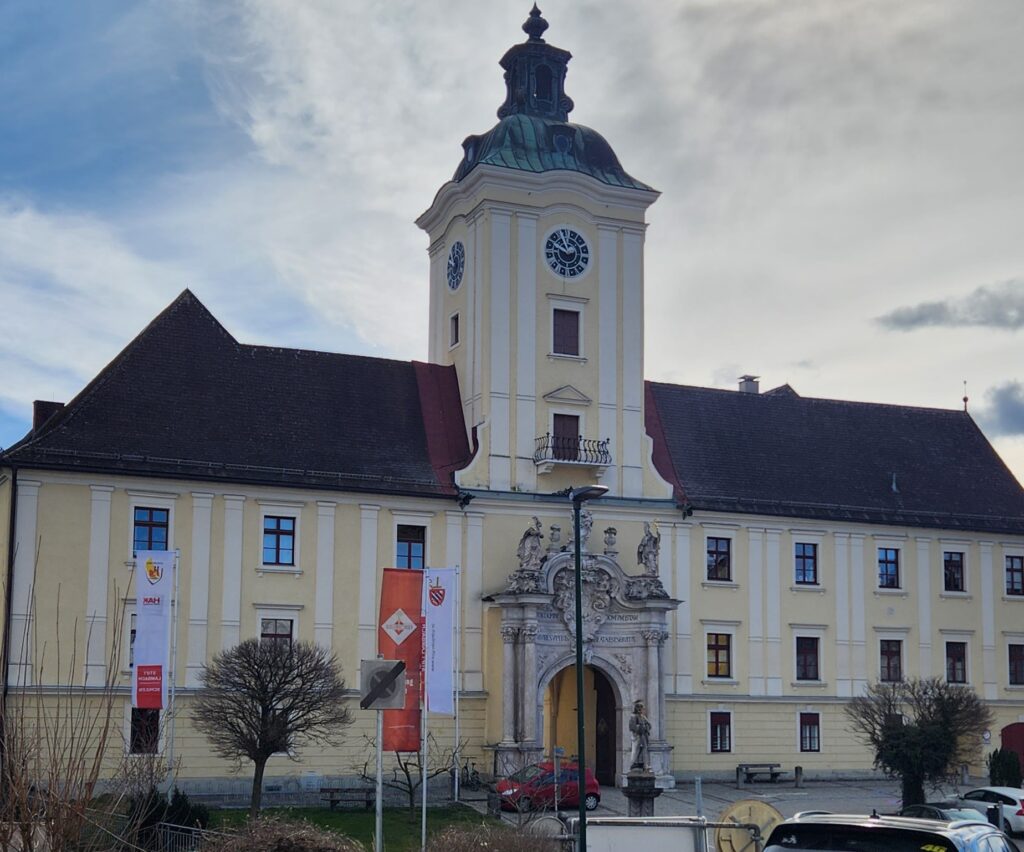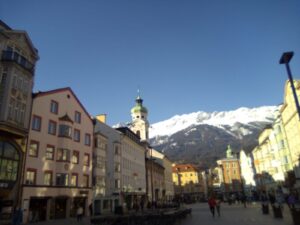I’ve been very lucky in my travels in Europe. I’ve worked in a number of countries, but mostly Austria, followed by Germany. As a teacher, teaching 1-week immersive English courses in high schools, I get to see a lot of the country and a lot of what the average tourist or traveller would rarely get to see, or even know was there.
*This article may include affiliate links, through which, if a purchase is made, the writer may receive a small commission..
The week I taught at the school in Lambach Abbey was one of these very privileged occasions, when not only did we get to present our end of week dramas in one of the oldest theatres in Austria, but our team of three teachers had the opportunity to have a personal tour of the Abbey. I expected it to be an interesting tour, but I actually far exceeded those expectatons. Lambach is accessible by train from Linz or you could hire a rental car in Linz. It is possible to book a room and tour at Lambach Abbey Failing that, accommodation isn’t all that plentiful in Lambach itself, and it fills up quickly. Linz o r Wels would be alternatives.
Lambach Abbey itself is right in the middle of this small, but historical town. It stands as a testament to nearly a millennium of history, art, and spirituality. It was founded in 1040 by Count Arnold II of Wels-Lambach. His son transformed it into a Benedictine monastery in 1056. Today, Lambach Abbey offers visitors a unique glimpse into its rich past. It showcases architectural marvels and artistic treasures that span centuries.

Architectural History of Lambach Abbey
As you approach the abbey, its Baroque façade,immediately strikes you. It is a result of extensive 17th and 18th century renovations. The renowned Carlone family played a large role in this transformation, infusing the abbey with the ornate elegance characteristic of Baroque artistry.
The grand and ornate abbey church is dedicated to the Assumption of the Virgin Mary. Its interior is covered with intricate frescoes depicting scenes from the life of Mary. The frescos were painted by Melchior Steidl in 1698. The high alter is made from Salzburg marble. Its a focal point features statues by Lorenzo Mattielli and a painting by Joachim von Sandrart. The organ built by Christoph Egedacher in 1657, which they still use today during services and concerts.
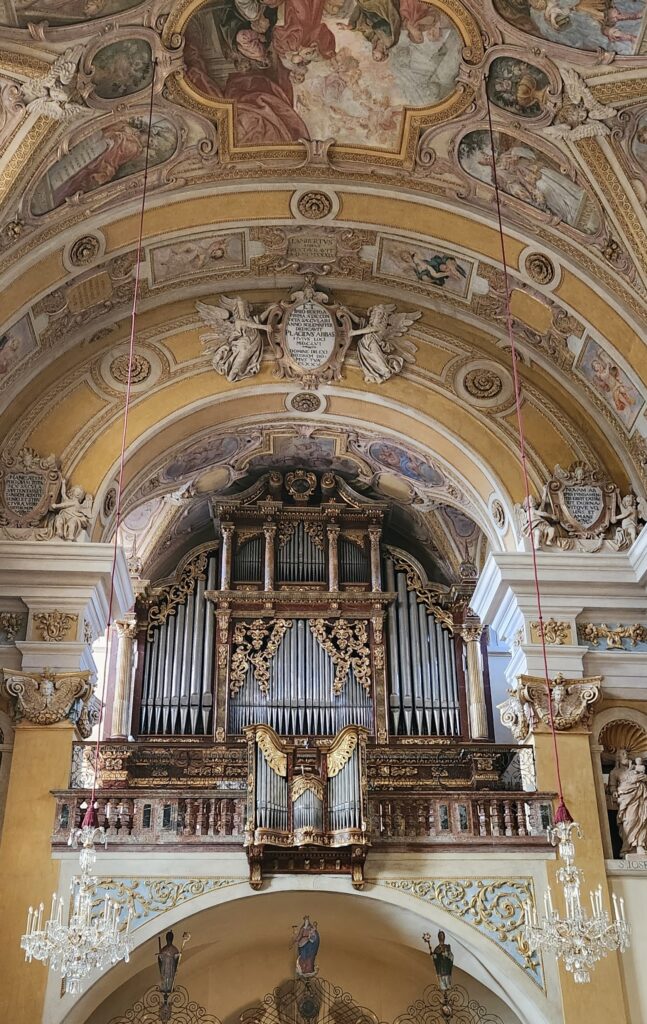
Romanesque Frescoes
One of the abbey’s most significant treasures is its collection of Romanesque frescoes, considered the oldest in the southern German-speaking region. Renovators discovered these behind the walls. Their preservation offers a rare glimpse into medieval ecclesiastical art.

The Baroque Theatre: A Cultural Gem
Lambach Abbey is home to one of Austria’s oldest operational Baroque theaters. (This is the one mentioned above, where the studentsperformed their dramas). Abbot Amandus Schickmayr, established the theater in 1770. The Abbey has meticulously restored it and it continues to host performances. This maintains the Benedictine tradition of integrating arts and culture into monastic life.
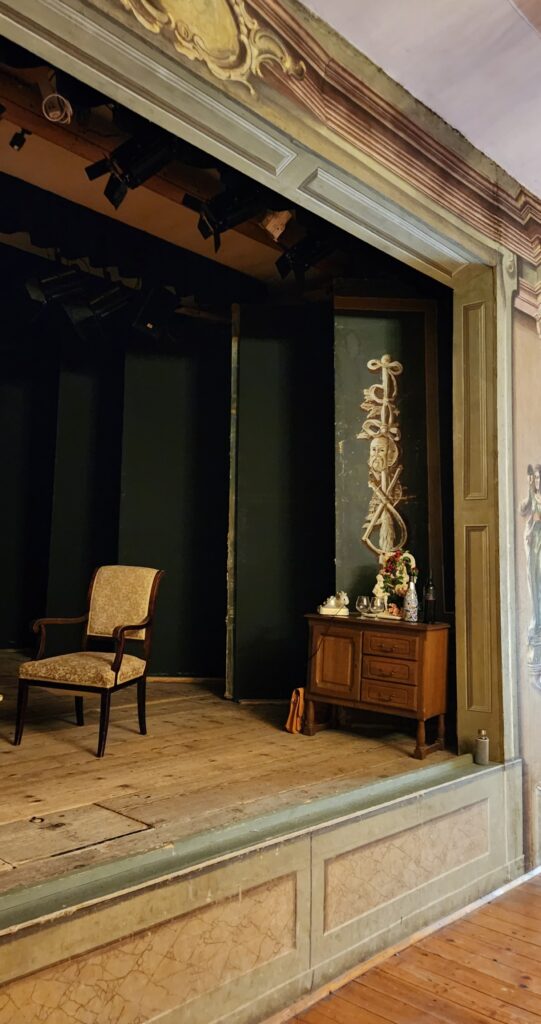
The Library: A Repository of Knowledge
The abbey’s library, baroque in design since 1699, houses approximately 60,000 volumes, including manuscripts and historical documents. Among its treasures is the Mozart’s “Lambach Symphony” manuscript .This the abbey’s historical connections to prominent cultural figures. Mozart stayed in the Abbey as he was en route from Salzburg to Linz, which led to the naming of that symphony. Apparently Bonaparte was also a ‘guest’ at the Abbey on his rampage through Europe.
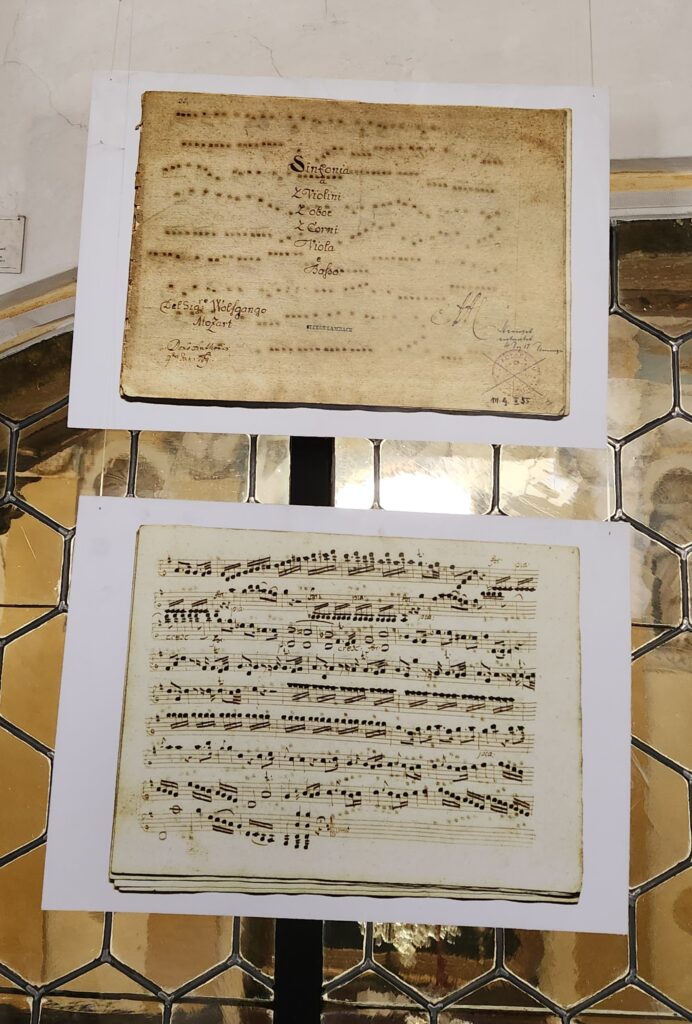
Many of the books aren’t accessible to the public due to their age. Some date back to the 9th Century. However, the Abbey is in the process of digitizing their collection and we saw huge piles of books ready for this process. It was really a sight to behold for a booklover such as myself.
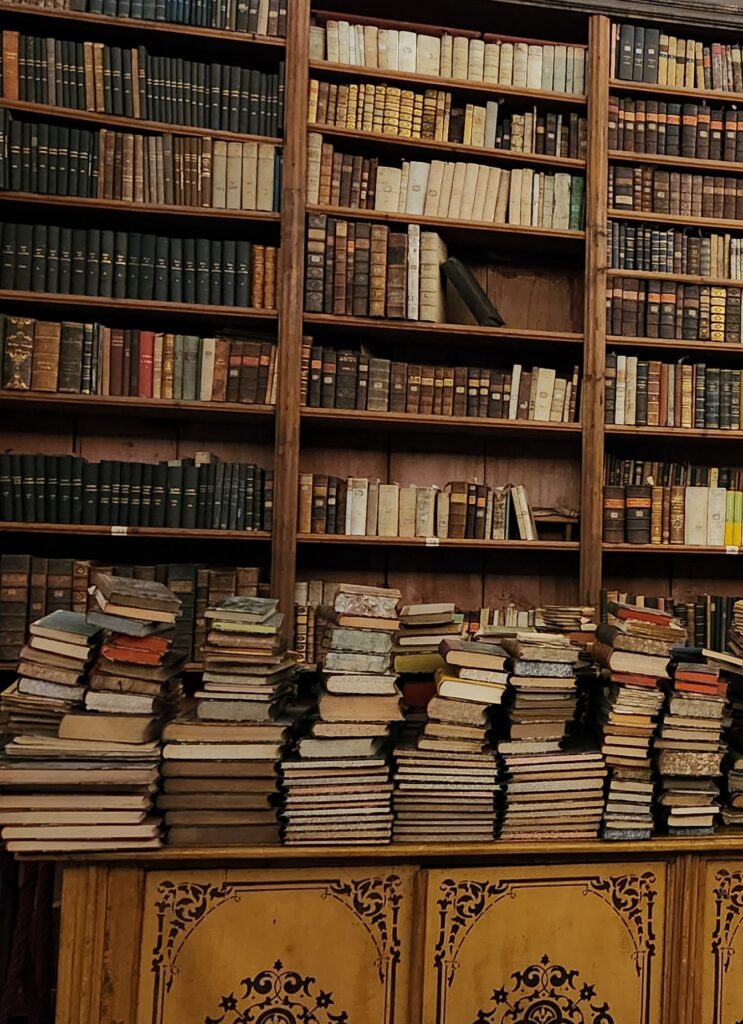
Planning Your Visit: Guided Tours and Accessibility
For those eager to explore Lambach Abbey, guided tours are available daily at 2:00 PM from Easter Sunday through October 31st. These tours provide access to the Romanesque frescoes, the Baroque theater, the library, and the abbey church, offering a comprehensive experience of the site’s historical and artistic significance. The abbey is conveniently located in the town of Lambach, making it accessible for travelers exploring Upper Austria.
Conclusion: A Testament to Enduring Legacy
Lambach Abbey stands as a beacon of cultural and spiritual heritage, inviting visitors to step back in time and immerse themselves in the rich tapestry of its history. Whether you’re an aficionado of art, architecture, or history, a visit to this venerable monastery promises a deeply enriching experience.
